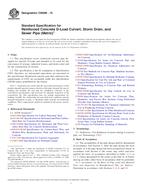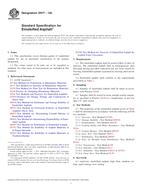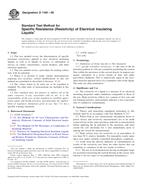1.1 These test methods describe the determination of relative optical retardation associated with the state of anneal of glass containers. Two alternative test methods are covered as follows:
| Sections | |
| Test Method A-Comparison with Reference Standards Using a Polariscope |
6 to 9 |
| Test Method B-Determination with Polarimeter | 10 to 12 |
1.2 Test Method A is useful in determining retardations less than 150 nm, while Test Method B is useful in determining retardations less than 565 nm.
Note 1 – The apparent temper number as determined by these test methods depends primarily on (1) the magnitude and distribution of the residual stress in the glass, (2) the thickness of the glass (optical path length at the point of grading), and ( 3) the composition of the glass. For all usual soda-lime silica bottle glass compositions, the effect of the composition is negligible. In an examination of the bottom of a container, the thickness of glass may be taken into account by use of the following formula, which defines a real temper number, TR, in terms of the apparent temper number, TA, and the bottom thickness, t:
TR = TA (0.160/t)
where t is in inches, or
TR = TA (4.06/t)
where t is in millimetres.
This thickness should be measured at the location of the maximum apparent retardation. Interpretation of either real or apparent temper number requires practical experience with the particular ware being evaluated.
1.3 The values stated in SI units are to be regarded as the standard. The values given in parentheses are for information only.
1.4 This standard does not purport to address all of the safety concerns, if any, associated with its use. It is the responsibility of the user of this standard to establish appropriate safety and health practices and determine the applicability of regulatory limitations prior to use.
Product Details
- Published:
- 04/01/2011
- Number of Pages:
- 4
- File Size:
- 1 file , 73 KB


